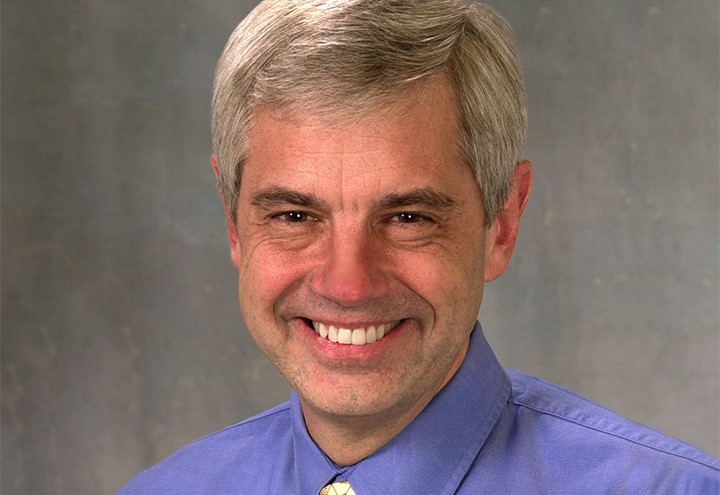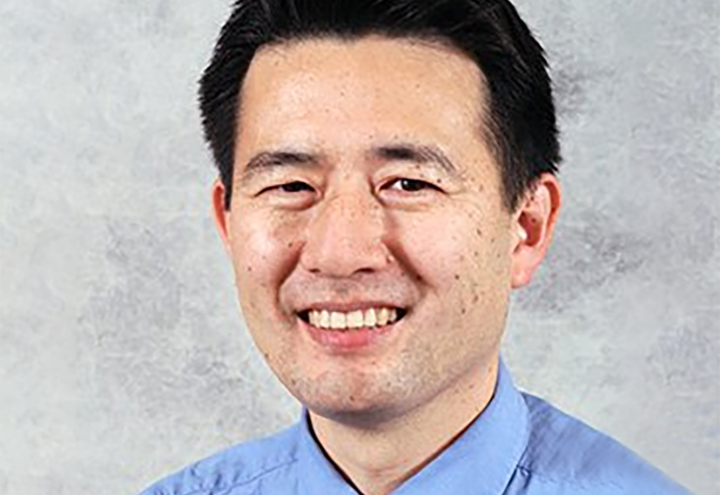Acute GVHD Diagnostics, Leveraging Biomarkers in Patient Treatment
Dr. James Ferrara, Icahn School of Medicine at Mount Sinai, presents clinical case studies on the aGVHD MAGIC algorithm
A leader in the industry, Dr. Ferrara’s career has focused on the immunology of BMT, particularly its major complication, GVHD. Using innovative proteomic techniques, his team has identified and validated biomarkers for skin, gut, and steroid-resistant GVHD. Eurofins Viracor is exclusively partnering with Dr. Ferrara to utilize the approach developed by Drs. Ferrara and Levine and the Mount Sinai Acute GVHD International Consortium (MAGIC).
Learn how the Pre-Symptomatic, Symptom Onset, and Post-Treatment algorithms can predict whether Hematopoietic Cell Transplant (HCT) patients are at high risk for non-relapse mortality and acute graft-versus-host disease.
Dr. Ferrara discusses the biology of the biomarkers utilized in the aGVHD algorithm testing (REG-3α and ST2), explaining how they act as a “liquid biopsy” of the GI tract.
In addition, Dr. Ferrara explores three different clinical scenarios where the utilization of the aGVHD algorithm tests could predict non-relapse mortality and aGVHD. While reviewing example reports for each clinical scenario, Dr. Ferrara recommends the desired approach for treatment.
G V H D V I D E O S E R I E S - P A R T I
Using the MAGIC Algorithm Probability (MAP) to Guide Acute GVHD Treatment
Dr. James Ferrara & Dr. Ryotaro Nakamura present:
- The biology of the biomarkers used in the aGVHD algorithm assays.
- How MAGIC Algorithm Probability (MAP) testing classifies patients for long-term risk of severe GVHD and non-relapse mortality, identified in pre-symptomatic, symptom onset, and post-treatment HCT patients.
- How to interpret MAPs as response biomarkers.
- Case studies recommending treatment approaches guided by MAPs.
G V H D V I D E O S E R I E S - P A R T I I
Monitoring Acute GVHD with Biomarkers: How to Interpret Changes in the MAP
Dr. James Ferrara presents:
- How to interpret changes in the MAGIC Algorithm Probability for aGVHD.
- Guidance on interpreting changes in MAP results for effective clinical decision-making.
- The importance of the MAP (Multiplexed Assessment of Biomarkers) in assessing patient conditions.
- The role of biomarkers in enhancing patient care and treatment outcomes.
G V H D V I D E O S E R I E S - P A R T I I I
How Serum Biomarkers can Guide aGHVD Therapy: Results not matching up with GVHD, TMA (Thrombotic Microangiopathy) and COD
Dr. James Ferrara presents:
- Exploration of thrombotic microangiopathy (TMA) and its relationship to aGVHD.
- Causes of complications of disease (COD) in transplant patients.
- Key serum biomarkers used in monitoring aGVHD.
- How biomarkers can indicate disease severity and treatment response.
- Limitations of relying solely on clinical symptoms versus biomarker results.
- Factors contributing to mismatches between biomarkers and clinical symptoms.
G V H D V I D E O S E R I E S - P A R T I V


About Dr. James Ferrara:
Ward-Coleman Chair in Cancer Medicine
Professor of Pediatrics & Medicine, Hematology, Medical Oncology and Oncological Sciences, The Tisch Cancer Institute, Ichan School of Medicine Mount Sinai
Dr. James Ferrara is a physician-scientist whose clinical and research career has focused on the immunology of bone marrow transplantation (BMT), particularly its major complication, graft-versus-host disease (GVHD). Using trailblazing proteomic techniques, his team has identified and validated unexpected biomarkers for skin, gut, and steroid-resistant GVHD. He has created exceptionally large and informative biorepositories and mined them to meld these biomarkers into the first algorithm that predicts response to treatment and guides GVHD therapy. Dr. Ferrara’s pioneering mechanistic studies have illuminated unexpected interactions between the innate and adaptive immune systems, leading to both conceptual breakthroughs and the discovery of novel therapeutic targets. A superb clinician and world-class clinical investigator, his decades-long focus on GVHD has significant potential to make BMT safer and more effective for all patients.
Dr. Ferrara graduated cum laude from Georgetown Medical School and then completed his pediatric residency and fellowship at Boston Children’s Hospital and the Dana-Farber Cancer Institute. After 19 years, he went to the University of Michigan to direct the combined adult and pediatric BMT program. The Icahn School of Medicine at Mount Sinai recruited Dr. Ferrara in 2014 to become the Ward-Coleman Professor of Cancer Medicine and to direct the Center for Translational Research in Hematologic Malignancies.
About Dr. Ryotaro Nakamura:
Professor, Department of Hematology & Hematopoietic Cell Transplantation; Director, Center for Stem Cell Transplantation at City of Hope, Comprehensive Cancer Center
Since joining City of Hope in 2002, Ryotaro Nakamura, M.D., has been at the forefront of cutting-edge research in stem cell transplantation and the development of cancer vaccines. Among his promising projects is a study indicating that bone marrow transplants may be effective in treating systemic mastocytosis, a rare blood disease with no known cure, and the use of vaccines to replace antivirals, which can often spawn deadly infections.
Dr. Nakamura trained in Japan and completed a fellowship in hematology and oncology at the National Institutes of Health in Bethesda, MD, before arriving at City of Hope’s Hematologic Malignancies and Stem Cell Transplantation Institute, which includes the Judy and Bernard Briskin Center for Multiple Myeloma Research, the Toni Stephenson Lymphoma Center, and the Gehr Family Center for Leukemia Research.
Understanding the Algorithms & How to Order
MAGIC Algorithm & aGVHD Biomarker Testing
SET UP AN ACCOUNT
We Want To Be Your Clinical Lab Partner.
Let's Get You Started!

This promotional activity is provided by Eurofins Viracor and is not certified for continuing education credit. The content of these Product Theater Presentations and opinions expressed by presenters are those of the sponsor or presenters and not of the the Tandem Meetings (TCT Meetings) of ASBMT and CIBMTR.
